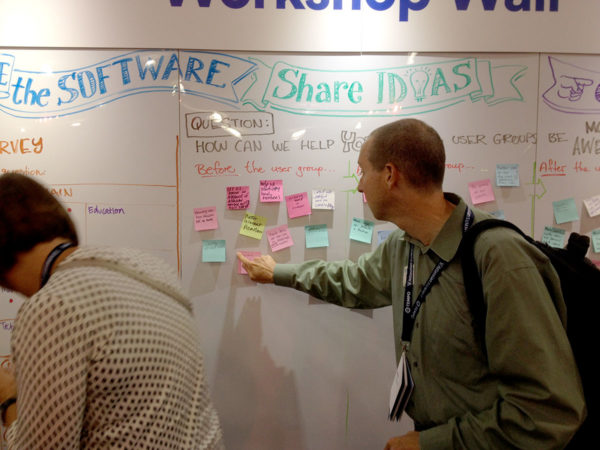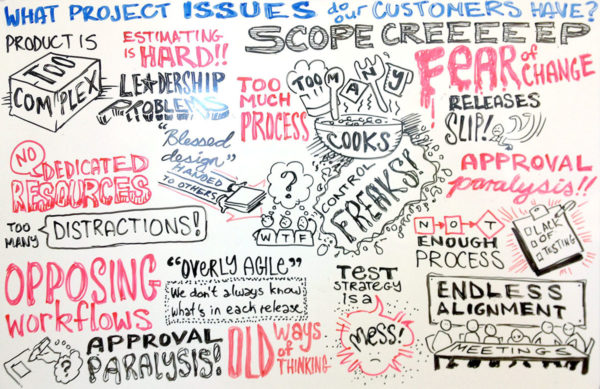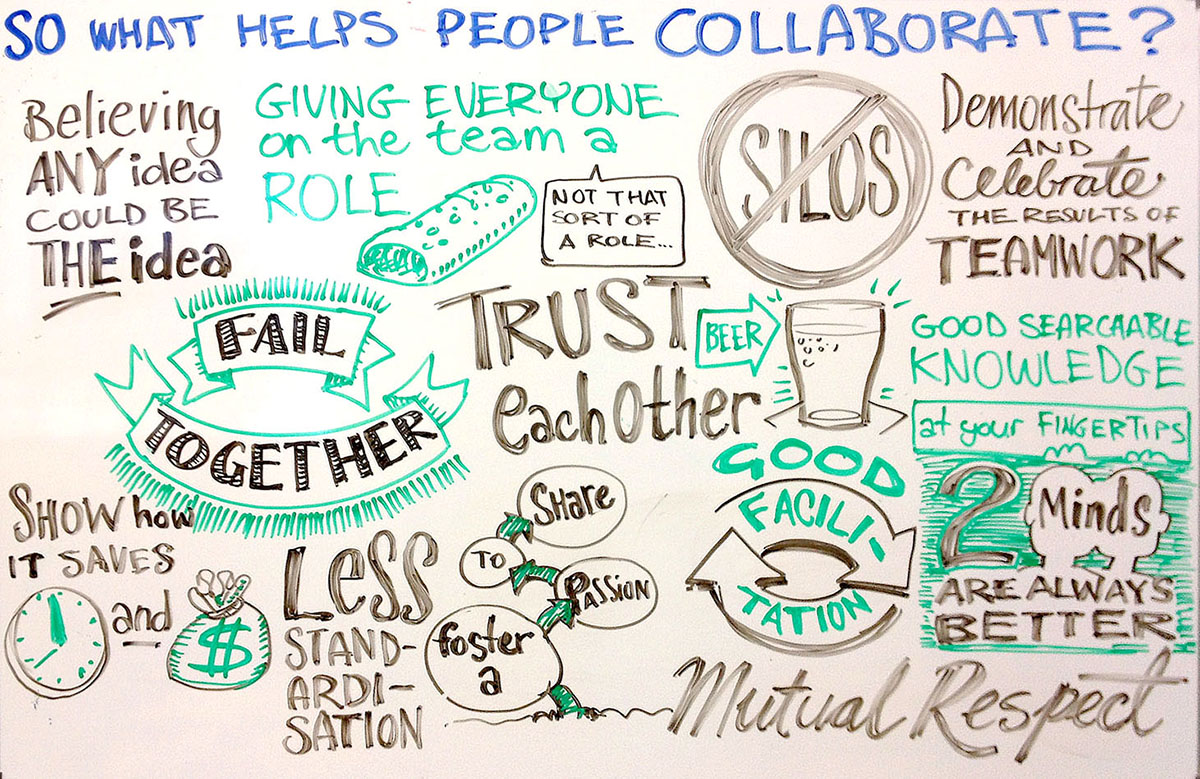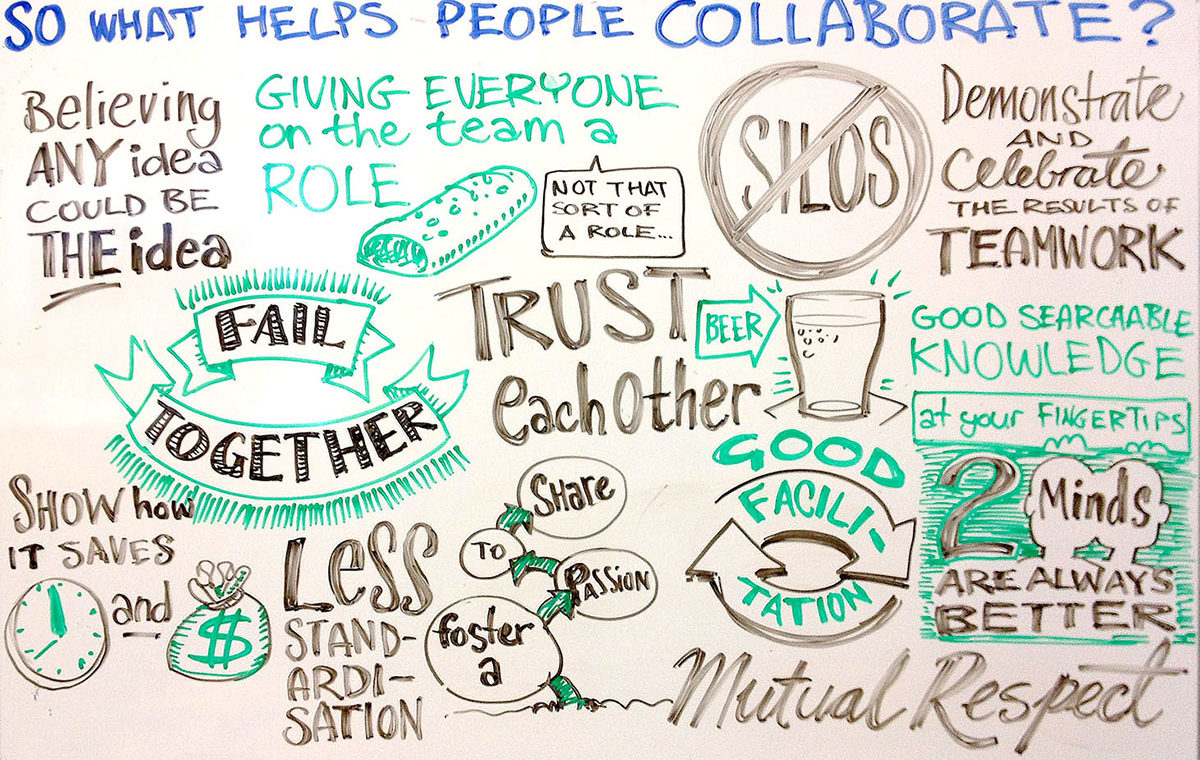At Atlassian, we put a lot of effort into listening to what customers think, especially when it comes to how their teams work together. So at Summit, our annual customer conference, we asked them.
We call it The Workshop Wall.
The Workshop Wall was part feedback device, part brainstorming activity, part confessional, and all parts serious fun. We ran a variety of different activities on the wall during the two main days of Summit. For each activity, anyone could come up and write ideas and answers to various questions on Post-it notes, as well as read the responses. The Workshop Wall generated over 470 Post-it notes!
It was a fresh, collaborative way for customers and vendors alike to share ideas, strike up rich conversations, and learn from each other.

Among the more popular questions were:
- Project Zombies! What are the challenges you have in your projects that just won’t die? And what can we all do about them?
- What does an awesome team look like? And what can we all do to help teams be more awesome?
- What’s holding your team back from being more collaborative?
- What helps people collaborate?
Teams are pretty important to us, and it turns out they’re pretty important to our customers as well. The hassles participants described about teamwork resonated universally. It turns out, our customers are very switched on when it comes to ideas about improving collaboration and making teams rock.
Here are some sketchnotes that summarize the responses to four of the more popular questions for you to enjoy. Cool, right? If you were at Summit, you might recognize one of your own responses!
What barriers to project collaboration do our customers have?

Many of the responses to this question showed that the way we think can really affect getting work done well. People called out things like:
- Fear of change
- No dedicated resources
- Approval paralysis
- Old ways of thinking
- Endless “alignment” meetings
- Scope creep
It was also interesting to see that customers sometimes suffer from “too much process” and “not enough process.” Clearly, getting the right amount of process in place is hard.
What are the problems in collaboration?

What really stuck out to me about the responses we got to this question was how personal many of the answers were: “I’m new, so my idea doesn’t count,” and “I’m not sure it’s the right time to share.”
- Group think
- A culture that rewards competitive behavior
- Fear of the unknown
- Comfort in silos
- “I’m better than they are, so I’ll do it myself”
The response that got the most “likes” (or “sticky stars”) was: “I’m more valuable if I don’t share what I know.” This indicates that a truly agile collaborative mindset has a long way to go in mainstream work life.
What does it mean to collaborate with others? What helps people collaborate?

There were definitely a lot of ideas about improving the tools and processes—giving everyone a role, good searchable knowledge at your fingertips, and so on—but what rang loud and clear was how important it is to have a shared supportive attitude: mutual respect, trust, fostering a passion to share, and celebrating the results.
- Believing any idea could be THE idea
- Demonstrate and celebrate the results of teamwork
- Foster a passion to share
- Beer (obviously
)
This was so empowering and inspiring for everyone to see take shape on the wall. “Fail together” is my own personal favorite!
How can we improve teamwork?

And finally, the Workshop Wall wouldn’t be complete without asking: how can we all make teams more awesome? This drew the most ideas and answers, and became a hundred motivational posters rolled into one. Here are some of the gems:
- “Stop a ‘them vs. us’ culture”
- “Don’t settle for so-so”
- “Innovation is everyone’s job”
- “Open communication”
- Hire based on attitude
- Trust each other
Try it yourself!
The Workshop Wall worked really well as a fast, fun way to collaborate and generate a lot of ideas and conversations. Many of those who stopped by to write Post-it notes also took photos of the wall at various times and said they wanted to try something like this themselves.
So go ahead and give it a go at your own workplace. All you need is Post-it notes, markers, a large space, and some meaty questions. Get people thinking. And let us know how you go, we’d love to hear what your own Workshop Wall was like for you.





 )
) 




































